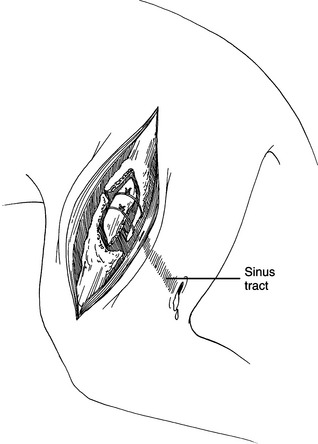Chapter 121 Osteomyelitis
Osteomyelitis is caused by infection of bone and associated structures (soft tissue, periosteum, and endosteum). Osteomyelitis is invariably caused by an infectious agent such as bacteria or fungi. Acute onset osteomyelitis is rare and generally does not show detectable radiographic changes until 5 to 10 days after bone inoculation. Chronic osteomyelitis is seen as a complication from orthopedic surgery, extension of tooth infection into bone (with periodontal disease), or from nail bed infections. Osteomyelitis can mimic other diseases such as panosteitis, hypertrophic osteodystrophy, and neoplasia and should be differentiated from these.
ETIOLOGY
Bacteria
Table 121-1 ROUTES OF INFECTION IN OSTEOMYELITIS
Open reduction and internal fixation of fractures; other orthopedic intervention
Extension from soft tissue infection (periodontal disease, rhinitis, otitis media)
Traumatic injuries and bite wounds
Penetrating foreign bodies, including sticks and grass awns




